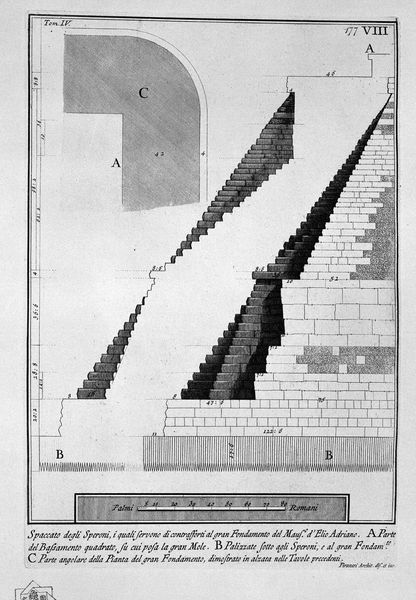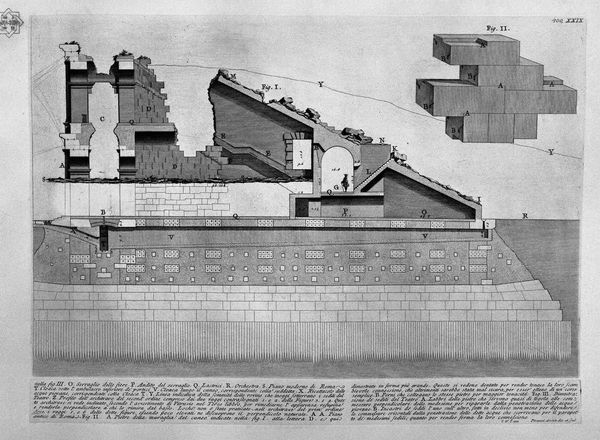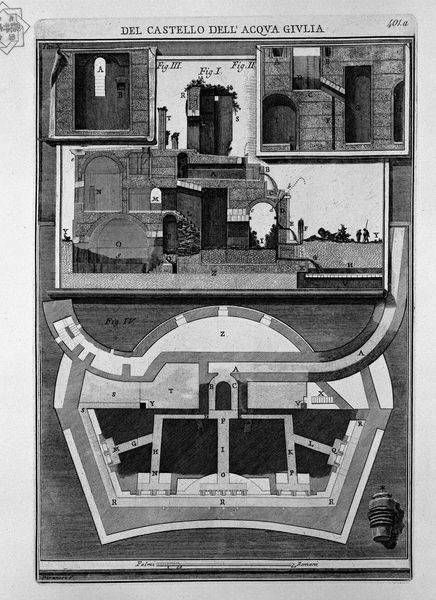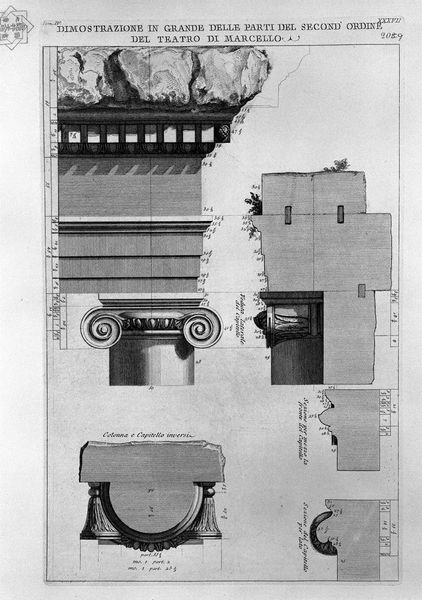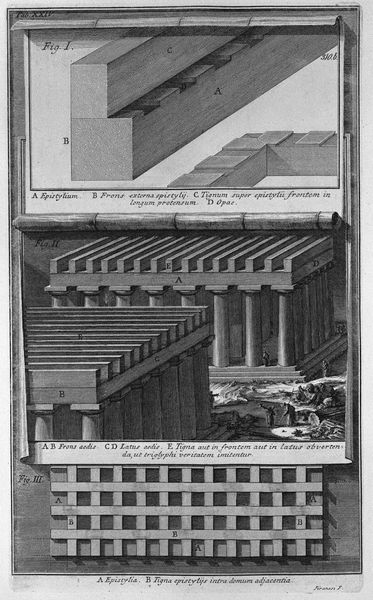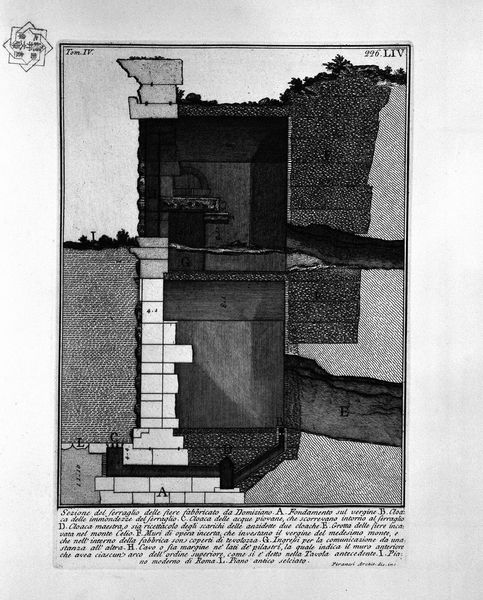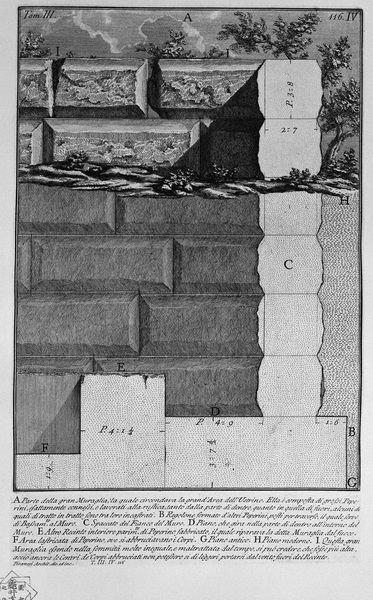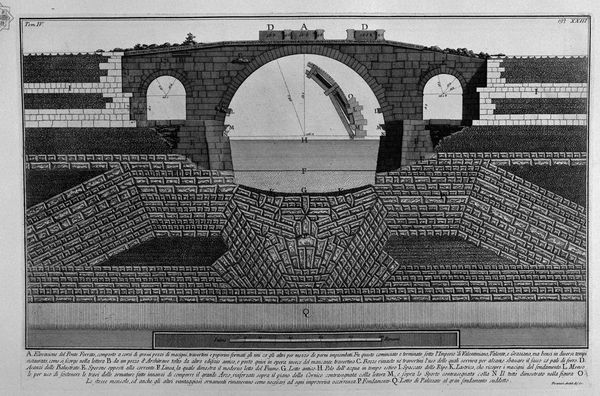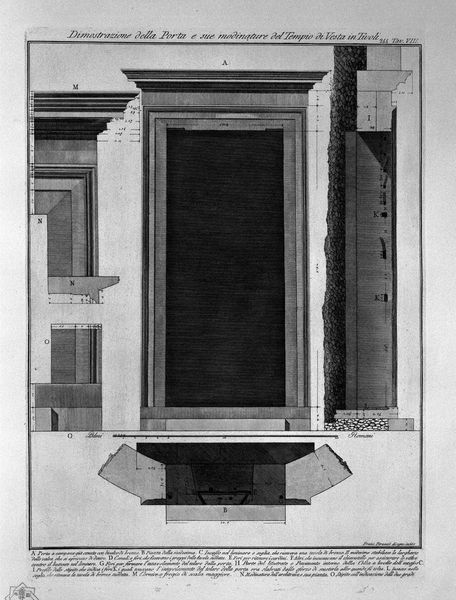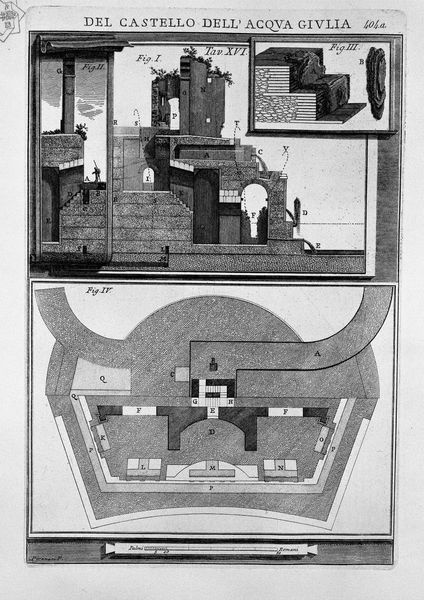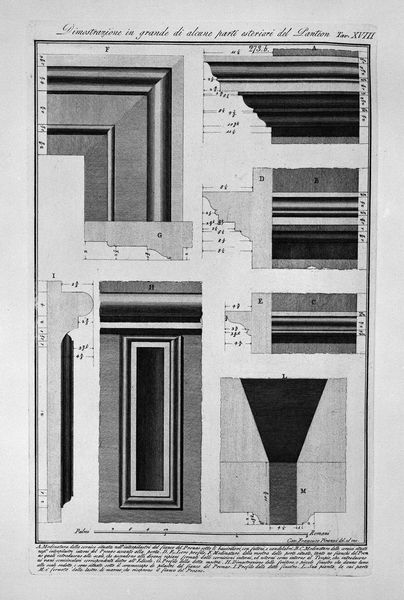
The Roman antiquities, t. 4, Plate XXIV. Elevation of the bridge and its foundations Cestius.
0:00
0:00
drawing, print, etching, paper, ink, graphite, engraving, architecture
#
drawing
# print
#
etching
#
perspective
#
paper
#
romanesque
#
ink
#
geometric
#
architectural drawing
#
line
#
graphite
#
cityscape
#
history-painting
#
academic-art
#
engraving
#
architecture
#
realism
Copyright: Public domain
Editor: This is an etching by Giovanni Battista Piranesi, titled "The Roman Antiquities, t. 4, Plate XXIV. Elevation of the bridge and its foundations Cestius." It's fascinating, almost like a technical drawing, but with an artistic flair. The precision is incredible, and I'm struck by the detail given to the bridge's foundations. What's your interpretation of it? Curator: It's interesting that you see it as a technical drawing. In some ways, it is, but Piranesi was deeply invested in the cultural power of these Roman ruins. Think about the 18th century—Rome was the epicentre of Grand Tour. Educated Europeans would flock to the city. Piranesi was not just documenting; he was constructing a visual argument about Rome's grandeur, selling prints like this to wealthy tourists. The detail, as you point out, elevates it. It suggests a meticulous study, imbuing the subject with an aura of scholarly authority and timelessness. Editor: So, the audience partly dictated the style? By appealing to tourists who appreciated history and architectural drawings? Curator: Exactly! These weren't simply records. They were commodities. Think of the market for antiquities. How does this print enhance the idea of Rome and what kind of narratives did people share from these experiences? Editor: It's a reminder that art is intertwined with social forces. Even architectural prints served purposes beyond documentation. Thank you, that perspective completely changes how I look at Piranesi’s work! Curator: And hopefully you realize that art lives and breathes, evolving through socio-political dialogue.
Comments
No comments
Be the first to comment and join the conversation on the ultimate creative platform.
